 |
David EustonDamage to the prefrontal cortex, a part of the frontal lobes, can result in poor planning, unreasonable risk taking, and inappropriate social behaviour. The prefrontal cortex thus plays a crucial role in the decision making and emotional regulation that allow us, as humans, to function smoothly in our personal lives.The lives of rats are arguably simpler than our own, but they must solve many of the same everyday tasks as humans: deciding whom to fight and whom to befriend, knowing when to react in anger and when to appease, deciding when to keep searching (e.g., for food) or when to stay with what you have. Rats, too, have a prefrontal cortex which, anatomically, looks a lot like parts of the human prefrontal cortex and may serve a similar purpose. The functioning of this region in the rat's brain is the focus of David Euston's research.By looking at the activity of individual brain cells during complex decision-making tasks, Dr. Euston hopes to uncover how the prefrontal cortex integrates sensory input, memory, and emotional state to guide the rat in adaptive behaviour. Because many brain structures, including parts of the prefrontal cortex, are conserved across species, uncovering the computations served by the rat prefrontal cortex will hopefully shed light on the functioning of our own prefrontal cortex. |
 |
Robbin GibbDr. Gibb’s current research focus is on the role of parental (maternal or paternal) experience-either prenatal or preconception, on brain development and plasticity in offspring. One aspect of this research is to study how recovery from early brain injury is impacted by parental experiences. The Gibb Lab studies both positive (e.g. enrichment, tactile stimulation) and negative (e.g. stress, alcohol) experiences and have seen that preconception and prenatal experience have a profound impact on offspring behaviour and neuro-anatomy. The goal of this research is to further understand the impact that pre-birth experience has on the wiring of the developing brain and ultimately its function. Research outcomes will enable a better understanding of how these very early experiences shape brain responses to later experiences. Another line of research involves understanding the ontogeny of language skills, executive function, and motor development in preschool to adolescent children. This work is done through collaboration with researchers in Kinesiology, Psychology, and Education. To date Gibb and colleagues have seen that hand preference for grasping to build Lego® models, predicts executive function and vice versa. They have also demonstrated that hand preference for grasping to eat predicts better speech articulation. The aim of this research is to provide strategies to parents and educators to improve language development and executive function (both of which predict school and life success) in children. |
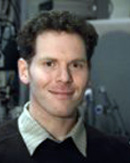 |
Aaron GruberDr. Gruber's laboratory investigates the neural basis of motivation and decision making in complex environments, with a focus on how neuromodulators such as dopamine influence neural synchronization, information encoding, and learning in cortical and subcortical brain structures. One goal of this investigation is to better understand how subtle alterations of neural dynamics, such as that associated with addiction and psychiatric illness, can lead to distractibility and poor decision making.
Dr. Gruber's laboratory undertakes these investigations using a multidiciplinary approach that includes neural recording, behavioural assays, pharmacology, optogenetics, and computational modeling. |
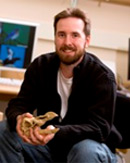 |
Andrew IwaniukThe brain varies in size and shape across animals more than any other organ. Many theories have been proposed to explain how and why this variation in the brain exists, but the majority of this research relies on a small subset of animal species. As a result of this myopic focus, our understanding of how and why evolutionary changes in the brain occur are biased, incomplete and likely incorrect. The long-term goal of my research program is to test the validity of behaviour-based theories of brain evolution through studies within and across species. My lab uses a wide range of methods in the field and the lab to conduct these studies including: confocal, epifluorescent, brightfield and electron microscopy, immunohistochemistry, stereology, bioacoustics analyses, behavioural experiments, geometric morphometrics and multivariate and phylogeny-based statistics. For comparative studies, we also take advantage of an extensive brain collection in the lab and a high-resolution slide scanner. The results of our studies are providing significant insight into how the brain evolves, what evolutionary changes in anatomy have occurred and why these changes are necessary, all of which are fundamental to understanding brain function in all animals, including humans. |
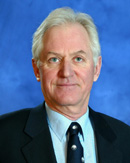 |
Bryan KolbDr. Kolb has spent an over 38-year career at The University of Lethbridge asking questions about how the cerebral cortex of mammals is organized and how it changes with experience, including injury. Recent work has looked at how early experience can alter the structure of neural networks in the cerebral cortex, and especially prefrontal cortex, and how such changes might influence later behaviour.
|
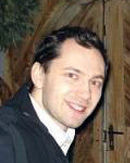 |
Artur LuczakThe brain is composed of billions of interconnected cells, creating the most complex system within the body. To study how such combined neuronal activity underlies an animal's processing of information, Dr. Luczak records signal simultaneously from a large number of neurons using a novel technique: multi-site silicon microelectrodes. Such parallel recordings from groups of neurons in the cortex and in subcortical structures are helping to understand information processing and memory formation in the brain. His lab also investigates how relations between neuronal populations are distorted by stroke and with different neurological disorders like stroke and epilepsy. In pursuit of his research goals, Dr. Luczak combines experiments with development of sophisticated data analysis methods and computer models. |
 |
Robert McDonaldThe theoretical foundation guiding Dr. McDonald's research program is that memory function in the mammalian brain is organized into a group of neural systems mediating different memory functions. Within this organization, normal thought and behaviour arise from cooperative and competitive interactions between these different neural systems [8]. Abnormalities in the relationships between these systems are now thought to be responsible for a wide range of abnormal behaviour and psychiatric disorders found in humans. Accordingly, detailed information about the functions of these various brain systems, how and when they interact with each other, and the underlying neurobiological mechanisms supporting these functions is critical if we are to understand normal and abnormal manifestations of behaviour in humans.
Dr. McDonald's research is currently directed at understanding: dynamic interactions amongst learning and memory systems; multiple memory system dysfunction and psychiatric disorders; the role of multiple combinations of co-factors in the etiology of Alzheimer's disease, factors contributing to cognitive and motor impairments following stroke, multiple pathways for memory consolidation, the contribution of neurogenesis in hippocampus to memory function; and the deleterious effects of cannabinoids on memory. |
 |
Bruce McNaughtonDr. McNaughton’s research focuses on the physiological and computational basis of cognition, with particular focus on memory and memory disorders, and the dynamic interactions among neuronal populations and synaptic plasticity mechanisms that underlie these phenomena. He has made significant contributions to the understanding of central synaptic plasticity mechanisms, spatial information processing in the hippocampal formation and cortex, cortico-hippocampal interactions and memory consolidation, and the aging of the nervous system. His current activities focus on understanding the neural mechanisms underlying spatial orientation (‘head-direction’, ‘place’, and ‘grid’ cells in the hippocampal formation and associated networks), the interaction between hippocampal outflow and neocortical signal processing, the reactivation of memory traces during rest periods following learning and the role of this process in memory consolidation, and the self-organization of synaptic networks during early post-natal development of the temporal lobe memory system. He is also engaged in preclinical studies involving altered signal processing in animal models of sporadic Alzheimer’s disease and early detection of seizures in medial temporal lobe epilepsy. His work emphasizes the development and application of advanced technologies in neuroscience including high density electrophysiological recording and optical imaging of neural activity at cellular and network levels. Throughout his career he has been involved in the development and application of new conceptual approaches and innovative technologies to neuroscience research questions and has made numerous contributions in theoretical/computational neuroscience. He was the originator of the ‘tetrode’ concept, which is the currently most widely used technology for simultaneous recording from large numbers of single brain cells in behaving animals, and which has opened an unprecedented new window on understanding brain mechanisms of cognitive processing and their disorders due to aging, brain disease, substance abuse, developmental disorders and brain trauma. More recently, he has played a key role in the development of two-time point functional neural imaging at cellular resolution based on activity dependent expression of multiple immediate-early genes. He currently directly supervises 6 postdoctoral fellows, and 8 graduate students, and also directs the Polaris Brain Dynamics research group within CCBN (http://lethbridgebraindynamics.com). He has been a mentor to over 30 graduate and postdoctoral students who have gone on to successful research careers at major research institutions. His research is supported by a $20M/10 year Polaris Award and personnel awards from Alberta Innovates – Health Solutions, and grants from NSERC and the European Commission. |
 |
Gerlinde MetzThe research program of Dr. Gerlinde Metz focuses on the influence of experience and environment on behaviour and brain plasticity. Her work showed that stress affects motor system function, risk of Parkinson’s disease and recovery from stroke. More recently, her laboratory has developed models to explore transgenerational inheritance of stress responses. Through transgenerational programming, experience in parents, grandparents and beyond can influence health and disease from early development to old age. For example, maternal stress during pregnancy can affect the risk of preterm birth in the next generations. Her team has identified epigenetic signatures linked to preterm birth that are induced by stress and passed down from one generation to the next. Dr. Metz completed her undergraduate studies in Biology at the University of Giessen and graduate studies in Neuroscience at the ETH Zurich. She habilitated in Medicine at the University of Jena. She is an AHFMR Senior Scholar. Her research program is characterized by interdisciplinary collaborations around the world. |
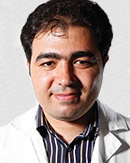 |
Majid MohajeraniThe main aim of my research is to neural activity on the subcellular, cellular, and circuit level in cortex upon sensory stimulation (tactile, visual, or auditory) and during motor behaviour, to uncover the neural correlates of sensory perception, associative learning and perceptual decisions. A goal for my research is to predict a neuron's responses to arbitrary, complex sensory stimuli. However, the activity in the sensory system depends not only on sensory stimuli, but also on what the rest of the brain is doing. My main effort, therefore, focuses on examining how the sensory system integrates sensory inputs from peripheries and lateral inputs from the brain. I investigate these questions with a combination of experiment and computational analysis. I work mostly in the mouse brain, with techniques such as in vivo imaging (such as two-photon microscopy and voltage sensitive dye imaging), multi-electrode recordings and optogenetics. I have also strong interest in structure-function relationships in the nervous system. Progress in such questions has been limited so far, because many of the currently used techniques for registering cellular activity do not identify the cellular origin of the recorded signals. We try to overcome this problem by developing new mapping procedures using newly developed optogenetics techniques combined with structural and functional imaging. I have a B.Sc. & M.Sc. in Electronic and Biomedical Engineering from Tehran Polytechnic, and a Ph.D. in Neuroscience from the International School of Advanced Studies in Trieste, Italy. Before joining the Department of Neuroscience, I was a postdoctoral fellow in Prof Tim Murphy’s lab at the University of British Columbia. |
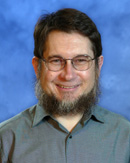 |
Sergio PellisRough-and-tumble play among peers is the hallmark of the childhood of many animals. Detailed studies on rats have shown that the benefits of playful experience as juveniles is to enhance social skills and this is achieved by modifying the development of the neurons of the prefrontal cortex. Ongoing research on rats in the Pellis laboratory seeks to characterize the experiences that are instrumental in affecting these brain changes and how these changes affect the functional involvement of these brain systems in executing effective social behaviour. However, not all species that play have these beneficial changes in brain and behaviour. Using a broad comparative approach, involving a range of rodents, primates and other animals, the Pellis laboratory is seeking to understand the evolutionary conditions that make it possible for play to be co-opted as a tool to sharpen social skills. |
 |
Rob SutherlandMemory is at the core of how each person experiences themselves and the rest of the world. Without it we are adrift in a succession of dream-like episodes whose significance is lost to us. Memory disorders are frequent and potentially devastating consequences of brain injury, disease, and abnormal development. Through the study of people and non-human animals, using behavioural, physiological, neurochemical and neuroanatomical techniques, Rob Sutherland and his team of trainees at the University of Lethbridge are working to develop a clear picture of normal and disordered memory. This information will be essential in discovering how memory works and in finding treatments for the memory disorders of aging, brain injury, prenatal exposure to alcohol, and other neurological diseases.
|
 |
Matthew TataThe sensory world is a busy place. The brain must quickly select critical information to use in memory formation, motor planning, decision making and awareness. How does the brain efficiently route information through its networks while ignoring irrelevant distraction? Can an Artificial Intelligence (AI) be designed to use the same strategies and mechanisms? Dr. Tata’s research program is comprised of two closely aligned streams to address these questions: the first is a basic-science approach to understanding the cognitive neuroscience of perception; the second is an applied-science program to design cutting-edge AI for cognitive robotics. His basic science mainly investigates the brain electrical dynamics associated with different perceptual and attentional tasks - typically using electroencephalography (EEG) in humans. This research program also investigates situations in which attentional selection goes wrong, such as ADHD and addiction. His applied research uses a variety of different robotics platforms, ranging from the simplest Arduino-powered robots, to the ultra-high-tech iCub humanoid (see www.icub.org). This program aims to recreate human-like perception and goal-driven decision-making in robotics. As a complement to his research, Dr. Tata is a co-founder of DeepBrain Analytics. His company applies smart AI to computationally difficult problems in science and technology. |
 |
Masami TatsunoDr. Tatsuno's experimental research is aimed at understanding how REM and non-REM sleep contribute to memory consolidation. By recording multi-neuronal activity with hippocampal dependent and independent tasks, his laboratory investigates whether different types of memory benefit differently from REM and non-REM sleep or whether REM and non-REM sleep act serially and play complementary roles.
His group also investigates decoding of neuronal activity during REM sleep, which will lead to decoding of dream content. Dr. Tatsuno's computational research focuses on further development of information geometric method for multi-neuronal spike patterns. This approach, for example applied to spike data before and after the task, will provide further insights into changes in the connection weights due to memory reactivation and learning. In addition, to investigate how reactivation improves performance, he constructs computational models of cortical and subcortical regions.
|
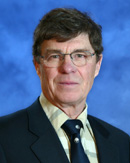 |
Ian WhishawWe use our hands effortlessly and seemingly without thought for numerous daily activities. Our dependence on our hands becomes apparent to the approximately 60,000 Canadians who each year are added to those who have suffered brain damage that results in incapacitation in hand use. Ian Whishaw's research asks how hand use evolved, how it develops in infants, how it changes after brain injury, and how recovery can be encouraged after brain injury. His research involves studying a wide range of animals, including humans, that use their hands for feeding and other activities. He also develops neural models to explain how hand movements are produced and he develops tests that can be used to examine hand use in both humans and nonhuman animal models of brain injury. Whishaw has a second line of research devoted to the study of behavior of horses including horse locomotion, taste, and visual control of behavior.
|